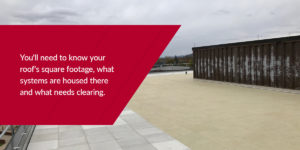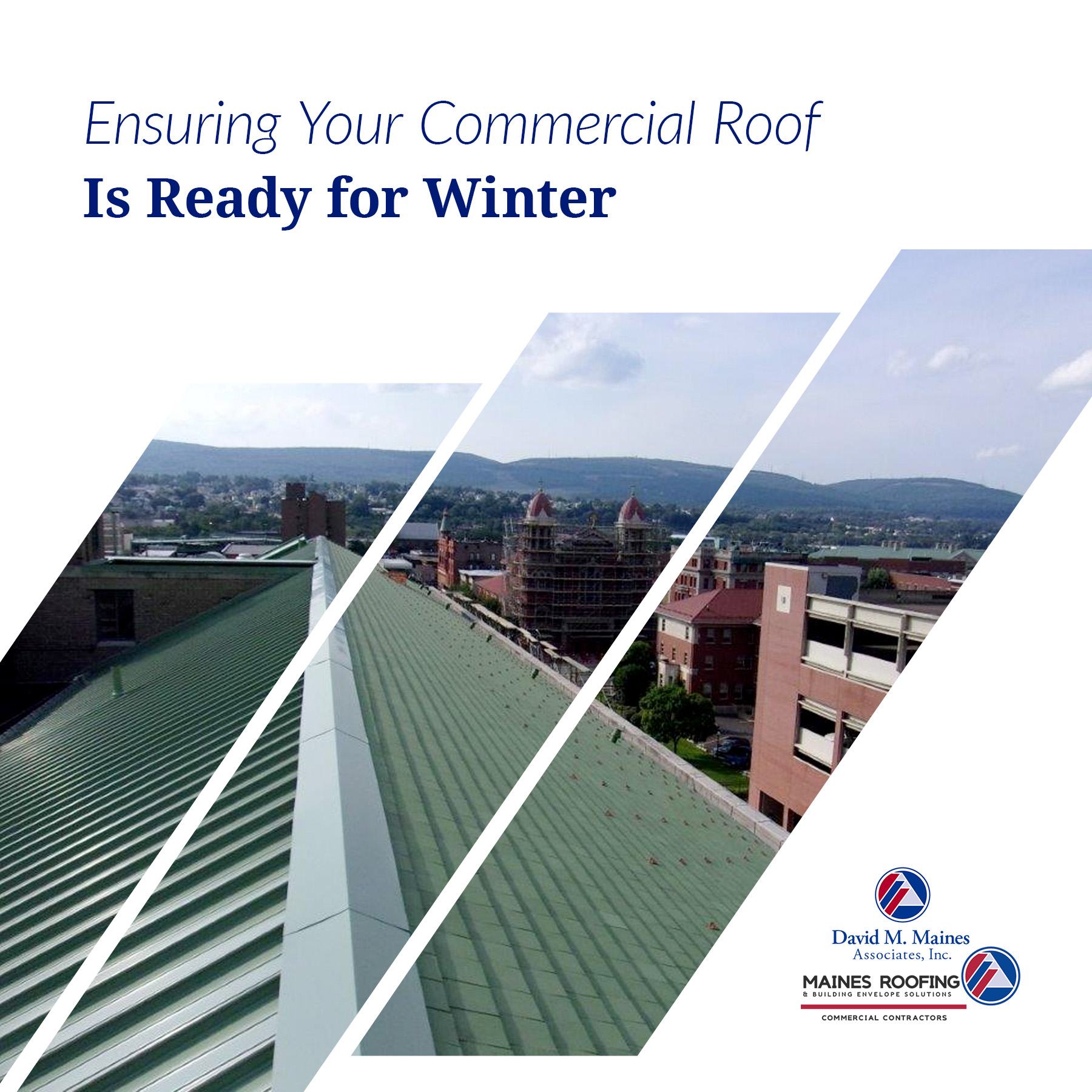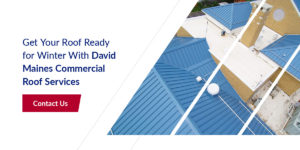As the year transitions into the cooler months, you’ll have to prepare your roof for winter. Your commercial roof holds up to heavy wear and tear throughout the year, but added strains come with the snow and ice. Ice dams might form if your gutters aren’t clear, and melting snow and ice can lead to water damage and leaks. You’ll need to ensure your roof is in top condition before winter hits.
1. Conduct a Roof Inspection
Start your commercial roof winter prep with a thorough roof inspection. An informal visual inspection will help you spot potential problems before winter arrives. Only walk on your roof if you feel it’s safe to do so. Otherwise, contact a roofing company for a professional inspection.
A detailed roof inspection will help prevent problems and keep your roof safe through the cold winter months. Ensure everything is working correctly and check for any debris buildup. Additionally, keep an eye out for any other potential problems. Some things you should look out for include:
- Clogged gutters and pipes
- Sagging
- Cracking
- Shingle damage
- Increased energy bills
- Separated roof panels
While an informal roof inspection can help you catch glaring issues, getting a professional roof inspection is the best way to prepare your commercial roof for snow. Professionals have the experience to quickly asses your roof, so they can spot small issues that could become more significant and give you advice on what to do next. A good roofing contractor will help you find any weaknesses in your roof and can patch them up before the snow hits.
2. Hire a Professional for Roof Cleaning
Roof cleaning is also essential for preparing your commercial roof for snow. Performing your roof inspection will help you evaluate what needs clearing and cleaning before repairs can be made.
While there’s some roof maintenance you can perform, you should leave more involved maintenance and roof cleaning to professionals. A roofing contractor will safely and efficiently clear your roof so it’s ready for winter. Removing any debris will help keep your gutters clear, preventing gutter clogs and water backups that can become notable issues in the cold.
3. Create a Snow and Ice Removal Plan

A snow and ice removal plan is one of the most critical methods for winterproofing a commercial roof. Having one of these ready will allow you to take preventative measures and respond more quickly to snow and ice accumulation on your roof. Here’s a rough guide to creating a removal plan this winter:
- Know your roof: You’ll need to know your roof’s square footage, what systems are housed there and what needs clearing. When you have all this information, you can order the right supplies and have all the knowledge you need for tackling snow and ice.
- Stay prepared: Keep your snow- and ice-clearing equipment and products stocked throughout the winter. You don’t want to get caught without enough de-icer when the snow starts accumulating.
- Watch the weather: Keep an eye on the forecast — you don’t want to de-ice unnecessarily, but you also don’t want to wake up to snow all over your roof. Check the weather and prep your roof for snow if it seems you’ve got poor weather incoming.
- Use the right tools: Use targeted tools to reduce snow and ice. This reduces waste and maximizes de-icer effectiveness. Pre-wetting, windrowing and more all have their own specific uses. Tailoring your tools to each building section will help improve your snow and ice reduction.
4. Prioritize Preventative Maintenance
Preventative maintenance is an excellent way to protect your building from snow damage. Regular preventative maintenance helps you catch problems early, reducing repair costs and stopping more extensive damage in its tracks. If you aren’t keeping up with maintenance and a snowstorm rolls in, your roof might sustain severe damage.
Here are some preventative maintenance tasks you can perform to keep your roof in top shape:
Trim Trees
Trim back any tree branches so they don’t hang over your roof. Loose limbs can fall onto the roof, damaging sheets, flashing and other crucial roof components. Overhanging branches can damage your roof even when the snow and ice have melted. Keep the area above and around your roof clear to avoid falling branches.
Clean Roof
Roof cleaning removes algae, debris and mold. This step will make your roof look nicer, and it’ll perform more efficiently and won’t wear out as quickly. Mold and moss buildup can push through roofing material, creating leaks and leading to water damage once the snow melts. Get a professional roof cleaning to clear buildup.
Clear Gutters
Clogged gutters and pipes prevent proper drainage. When snow and ice melt, they won’t be able to travel down the gutters and away from your roof. Instead, water will pool on the roof, damaging the structure and leading to leaks. Insufficient drainage is a common reason for commercial roof leaks. Regularly remove debris from the gutters and check gutters and pipes before snow or rain so that you don’t end up with backed-up water on your roof.
Perform Repairs
Don’t put off repairs — get everything fixed as soon as you can. The longer you wait, the worse the problem will get, and the more severe the damage will be. You might put off a repair too long and then get hit with heavy snow. The storm could exacerbate the problem, making you pay more for a previously minor repair. Prioritize repairs to avoid excess damage.
Get Your Roof Ready for Winter With David Maines Commercial Roof Services
Keep your roof strong during harsh winter weather with help from David Maines & Associates Roofing, Inc. With over three decades of roofing experience, we’re experts at roof maintenance, repairs, replacements and restoration.
Trust David Maines to deliver high-quality, efficient roofing services, letting you focus on your business and ensuring you have a durable roof no matter the weather. Ensure your roof is ready for winter — contact us to get started with our services.
Share

